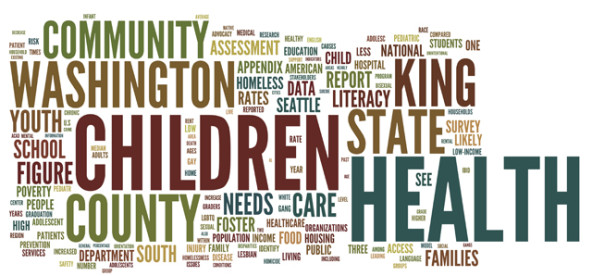Social change often depends on collaboration between industries or organizations that possess different but equally valuable expertise. To foster these collaborations, partners must first understand where there is overlap in their missions and why each organization stands to benefit from the other. But this can be difficult when the language that industries and organizations use to describe their work makes similarities opaque.
I work at the intersection of the health care and public interest law industries, helping integrate legal services into health care settings. For these medical-legal partnerships, an established public interest law organization formally partners with a healthcare institution. They train their staffs together to identify and treat the source of health-harming social problems—such as unsafe housing conditions, domestic violence, or lack of access to health insurance—and inform better policies. Despite the enormous value that health care and public interest law bring to one another’s work in these areas—and despite their often overlapping clientele—each group struggles to see past the differences in how they articulate need and mission (see below).
 A word cloud generated from the “2013 Illinois State Access to Justice Report.”
A word cloud generated from the “2013 Illinois State Access to Justice Report.”
 A word cloud generated from the “2013 Seattle Children’s Hospital Needs Assessment.”
A word cloud generated from the “2013 Seattle Children’s Hospital Needs Assessment.”
Struggling with language barriers is not unique to collaboration between these two industries, and many of the lessons from medical-legal partnership can help other groups illuminate shared missions, identify opportunities for collaboration, and develop common language for partnership. Here are three:
1. Abandon the what for the why.
So much about how organizations describe their work relates to what they do and how they do it. This usually highlights differences not similarities, and clouds opportunities for collaboration. Instead, start by having a conversation with potential partners about why you do your work. Why, not what, unlocks common ground and shared goals.
Are you enjoying this article? Read more like this, plus SSIR's full archive of content, when you subscribe.
Nothing about what health care professionals and public interest lawyers spend their days doing, for example, is similar. Each group trains for their work and approaches problems very differently, and they have very different resources at their disposal. But health care organizations serving low-income communities and public interest law organizations serve the same people. Both industries address the effects of hunger, poor housing, lack of education, and neighborhood safety have on people’s lives. Ask either group why they do their work, and they’ll likely answer that they believe in the right of every person to live in good health and with dignity.
In 2009, Simon Sinek wrote a book called Start with Why: How Great Leaders Inspire Everyone to Take Action that outlines the persuasiveness of leading with the motivation behind your work rather than the details of what you do. Asking potential partners why they do their work will tell you where your values and your missions overlap. Later, you can use what you do and how you do it to share your expertise, and define your respective roles.
2. Figure out how your work serves their mission statement.
Locate your potential partner’s mission statement and write a description of how your organization’s work serves their mission. If you can describe your work as vital to their mission using their values, and vice versa, then you can convey why collaboration is beneficial and make great strides to foster buy-in from partners.
In medical-legal partnership, public interest law organizations learned to describe the impact of legal problems on health, such as why living in substandard housing conditions triggers asthma or how lacking enough money to buy healthy foods makes diabetes harder to manage. They also learned to articulate how legal services help improve health outcomes, and started to reframe legal services as a way to increase health care workforce productivity and reduce health care costs. Adapting their language to the values of health care providers and administrators neither changed the work of public interest lawyers nor led to mission creep. It did, however, make health care partners listen and engage in collaboration. Over the last 20 years, 262 health care institutions in 36 states across the United States have incorporated legal services into the care they offer patients. In turn, health care partners learned to talk about disease in relationship to unhealthy policies and unenforced laws. They began to articulate why addressing certain problems with legal services is more effective than continually treating physical symptoms.
Learning to reframe your work in another industry or organization’s terms is not just a communications exercise; it helps make the business case for collaboration.
3. Quantify problems and outcomes in human terms, not industry-specific ones.
The narrow terms that industries and organizations use to describe their intended impact is often a barrier to seeing opportunities for collaboration. Abandon industry-specific terms and jargon, and instead focus on the broader human impact of goals and projects.
Perhaps the biggest gap between public interest law and health care exists in how each talks about and measures success. Public interest law determines whether it achieved justice by looking at the number of cases it successfully closed and laws it changed. Alternatively, health care asks whether it improved health by looking at how patients responded to treatment and used health care services. Health care may not be interested in the number of legal cases closed and public interest law may not be interested in the reduction of use in emergency room services, but both can agree on the value—both broadly and specifically in their own work—of more safely housed people and more people with enough healthy food to eat. Focusing on human impact reminds partners of their shared goals.
Regardless of what your industry is or what your organization does, describing problems and outcomes in terms of human well-being makes it easier to collaborate; it also has the added benefit of increasing community understanding and support.
Support SSIR’s coverage of cross-sector solutions to global challenges.
Help us further the reach of innovative ideas. Donate today.
Read more stories by Kate Marple.

